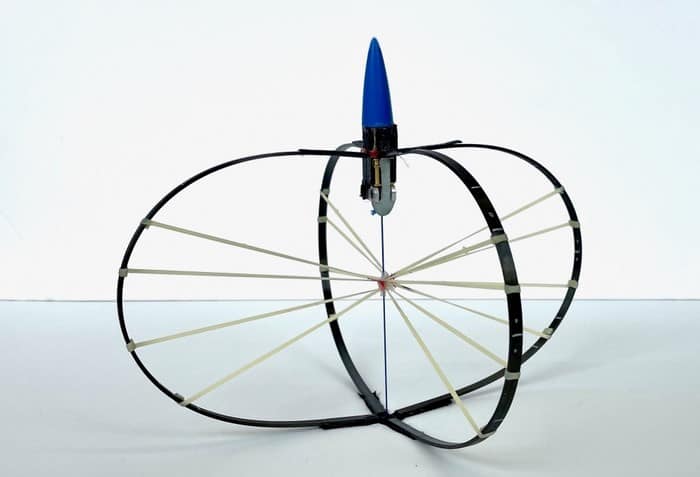According to Guinness World Records, the highest standing jump by a human is 1.70 m – which was done in 2021 by the American Christopher Spell. Apparently Spell is 1.75 m tall, so it looks like most humans cannot reach anywhere near their own heights when jumping.
Nature’s jumping champions are fleas, which can reach heights that are many times their body size – apparently, the record is 66 times. But now, researchers at the University of California, Santa Barbara have created a jumping machine that outperforms even the flea (see video).
In creating their jumper, Elliot Hawkes and colleagues took a similar approach to the flea and some other animals – they stored much of the energy need for their jump in a spring. But unlike animals — which use a small biological spring and a large muscle motor to jump – the mechanical jumper used a spring that stores a very large amount of energy compared to the output of its motor.
Big spring, tiny motor
Indeed, if the video is anything to go by, the jumper is essentially a big spring with a tiny motor that winds it up.
The jumper is about 10 cm tall and can jump to a height of 30 m, so about 100 times its height. The team reckons that their work could inspire a new type of jumping robot that could be used in areas where it is difficult to walk or climb — for example, on the Moon.
You can read more about the jumper here.
Classic experiment
A century ago, an experiment devised by the physicists Otto Stern and Walter Gerlach showed that atomic angular momenta are quantized spatially. This discovery played an important role in the development of quantum mechanics and is seen today as one of the classic experiments of modern physics.
There will be much more about this historic experiment in Physics World this year. In the meantime, you can learn more about the experiment by watching this video – which features Otto Stern and Walther Gerlach speaking about the experiment. English subtitles are provided by the molecular physicist Bretislav Friedrich of Fritz Haber Institute of the Max Planck Society in Berlin.
